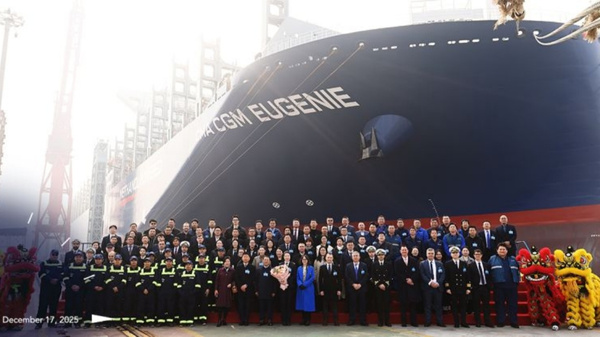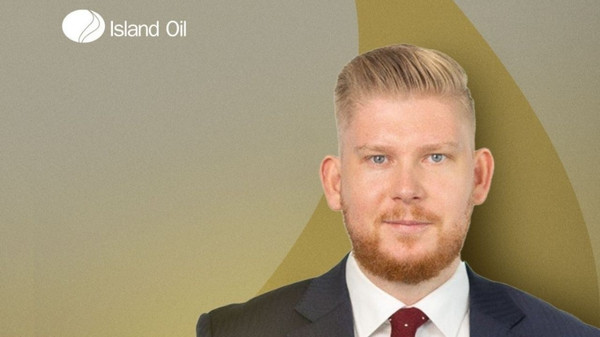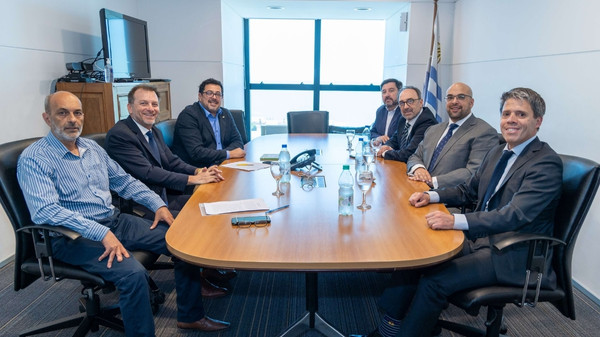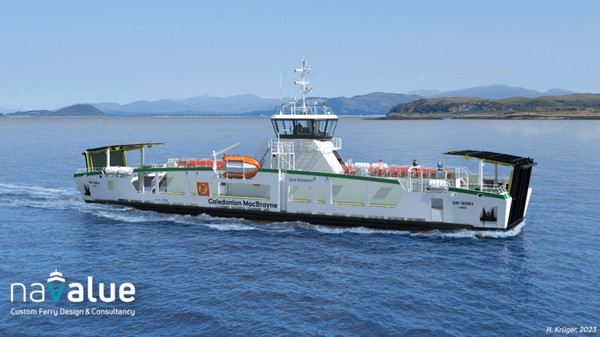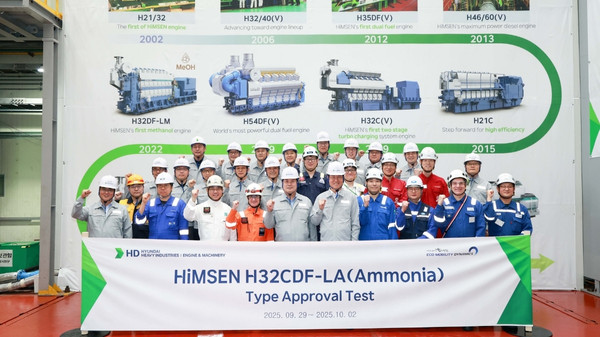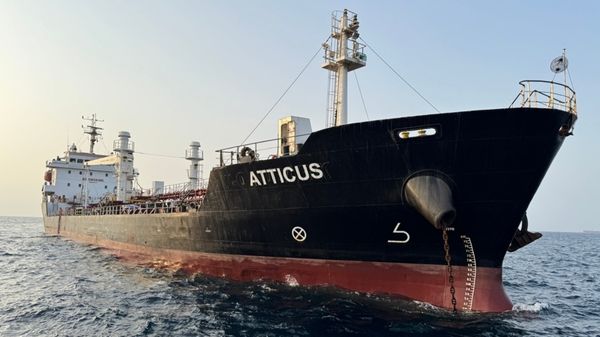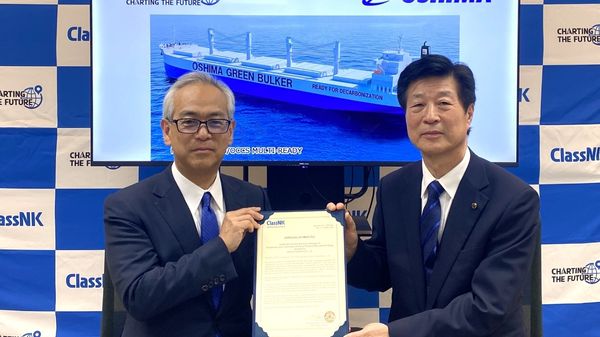Overall confidence levels in the shipping industry rose to their highest level for almost six years in the three-month period to February 2014, according to the latest Shipping Confidence Survey from international accountant and shipping adviser
Moore Stephens. Freight rates look set to improve or maintain existing levels over the next twelve months, while an increase in private equity funding is expected to have a major impact on the industry.
In February 2014, the average confidence level expressed by respondents in the markets in which they operate was 6.5 on a scale of 1 (low) to 10 (high), compared to the 6.1 recorded in the previous survey in November 2013. This is the highest figure since the 6.8 recorded when the survey was launched in May 2008.
All categories of respondent to the survey reported improved levels of confidence compared to the previous survey. Confidence on the part of owners was up from 6.2 to 6.6, while the rating for charterers (up from 5.7 to 6.5) was the highest in the life of the survey. The rating for managers was up from 6.1 to 6.4, while that for brokers was up to 6.4 from the previous level of 5.6. Geographically, confidence was up in Asia (from 5.9 to 6.4), in Europe (from 6.1 to 6.4), and in North America (from 6.6 to 7.1).
The mood of improving confidence evident in many of the responses to the survey was tempered by an awareness of the difficulties which the industry still faces. One respondent said: “There are signs that we have passed the deepest point of the recession. The only question now is how long it will take for the markets to improve to the point where we have sustainable rates again. It may be that some shipowners will still not make it because time – or cash and the patience of the banks – will run out.” Elsewhere it was noted, “2014 will see us bounce along, with small upward flurries followed by a return to barely profitable rates for all but debt-free vessels.”
“The markets have been in the low-end band for the past five years, affected by both supply-side and demand-side crises,” said one respondent. “But the supply side is now showing some stability, and the demand forecasts are positive in the light of various recovery measures under way in certain major economies. We expect to see the supply/demand imbalance corrected in fourth-quarter 2014. Then rates will rise, and it will be payback time!” In similar vein, it was noted elsewhere that, “The supply/demand imbalance should start to improve over the next twelve months, and we will see more ‘dirty’ and inefficient ships scrapped.” Extending that line of thinking still further, another respondent emphasised, “We are confident because we invested heavily in eco-ships, which will be the best performers in the coming years.”
The general mood of cautious optimism displayed by many respondents was typified by such comments as: “The markets have been too low for too long, and we are certain they will start to pick up,” and: “The trick is getting the timing of the cyclical swings right.” But there were others who were less confident. One said: “The continuing uncertain political and economic situation worldwide will keep shipping a very marginal business, affected by overcapacity.” Another, meanwhile, insisted: “There is no doubt that we are living on borrowed money and borrowed time, and the hot-air bubble is about to give. We are enjoying a false sense of security.”
It was evident from the survey that the threat posed by over-tonnaging has now assumed a lower level of criticality. One respondent noted: “We are convinced that the market will steadily improve over the coming year, mainly due to the limited ordering of newbuildings.” But a number of respondents still referenced the effect which a surfeit of ships could have on the fortunes of the market. One said: “It is to be hoped that owners start thinking properly, and only order newbuildings on the basis of genuine need.” Another emphasised: “Despite increased scrapping, there is still a brimming over-supply of tonnage coming into the market,” and another still insisted, “The market is still suffering from an excess of tonnage availability.”
One respondent said: “Protracted over-supply remains a risk arising from the socio-economic ordering of newbuildings and a surplus of new money seeking to invest in shipping.” On a similar theme, another pointed out, “While there are a number of positive indicators, there has to be some concern at the level of ordering. This new money may get burned in a similar manner to the KG money.” And it was the influx of ‘new’ money – specifically private equity funds – which a number of respondents picked up on.
One respondent observed: “There appear to be a lot of private equity funds, or vulture funds, willing and able to invest in shipping, which helps to increase confidence levels because the investors in such funds normally expect a significant rate of return.” Another pointed out: “Equity funds are cash-rich and keen to invest. Shipping is gaining favour as an investment, witness the number of IPOs that we are seeing.” Yet another said: “Hedge-funds have excess cash in abundance to purchase cheap assets for asset play over the next four years.”
Not everybody, however, saw the growth of equity funding in shipping as a good thing. One respondent said: “The over-supply of tonnage, together with private equity investment, will continue to depress rates and delay recovery.” Another noted, “The flood of private equity funding, which must be spent before it reaches its sell-by date, persuades previously sensible operators to ignore basic economic principles. It’s happened before.” In similar vein it was noted elsewhere, “Private equity investment is ruining any hope the markets had of better days. The shipping markets are changing structurally, with far too many new ‘finance experts’ who think they know shipping better than the shipping experts do. Stand by for a race to the bottom, followed by a long period of below-average returns.”
The likelihood of respondents making a major investment or significant development over the next twelve months was unchanged on the previous survey, on a scale of 1 to 10, at 5.8, which remains the highest figure since the rating of 6.0 recorded in August 2010. The figure for owners was slightly down on last time, from 6.0 to 5.9, as was the case with managers (from 6.1 to 6.0) and charterers (6.4 to 6.3). But the figure for brokers was up from 4.6 to 5.4.
Fifty per cent of charterers (up from 45 per cent last time) rated the likelihood of making a new investment over the next twelve months at 7.0 out of 10.0 or higher. The numbers of owners and managers of like mind were 47 per cent and 43 per cent respectively, down on the corresponding figures of 48 per cent and 51 per cent last time. Geographically, expectation levels of major investments were unchanged in both Asia and Europe, at 5.7 and 5.8 respectively, but down in North America from 5.8 to 5.1.
A number of respondents referred to ‘niche’ opportunities which they had identified as areas for possible expansion. But one complained, “Although there is certainly a lot of tonnage up for grabs in the ship management sector, the competition in Asia is unbelievable, with operating costs quoted which are impossible to maintain and which can only lead to poor and unsafe operation.”
Demand trends, competition and finance costs once again featured as the top three factors cited by respondents overall as those likely to influence performance most significantly over the coming twelve months. The overall number for demand trends was down by two percentage points to 21 per cent while, for the third quarter in succession, competition was unchanged at 19 per cent. Meanwhile, the number of respondents citing finance costs rose from 15 per cent to 16 per cent. Tonnage supply (unchanged at 13 per cent) featured in fourth place, while operating costs (up from 9 per cent to 11 per cent) supplanted fuel costs (down one percentage point to 9 per cent) in fifth place.
Demand trends remained the number one performance-affecting factor for owners, albeit down by 3 percentage points to 22 per cent. Finance costs, up one percentage point to 18 per cent, displaced tonnage supply (unchanged at 17 per cent) in second place. For managers, meanwhile, competition remained in first place, although down 3 percentage points to 19 per cent. Operating costs, at 16 per cent, assumed second place from demand trends and finance costs (15 per cent), unchanged and up one percentage point respectively on last time. For charterers, demand trends, while down by 4 percentage points to 22 per cent, featured in first place, ahead of tonnage supply (up from 16 per cent to 19 per cent) and fuel costs (18 per cent).
Geographically, demand trends were the most significant factor for respondents in Asia (although down from 24 per cent to 20 per cent), Europe (unchanged at 22 per cent) and North America (down 11 percentage points to 24 per cent). Competition was the second most significant performance-affecting factor in Asia (up one percentage point to 20 per cent), Europe (unchanged at 18 per cent) and North America (down from 24 per cent to 23 per cent). Operating, finance and fuel costs featured in third place in Asia, Europe and North America respectively.
A number of respondents referred to the rising cost of fuel as a significant performance-affecting factor. “Fuel prices are a deterrent, said one. “Freight rates have increased, but fuel prices eat into time-charter equivalents.”
There was a one percentage-point increase (from 40 per cent to 41 per cent) in the number of respondents overall who expected finance costs to increase over the next twelve months. The number of respondents expecting finance costs to come down, meanwhile, fell by 3 percentage points to 6 per cent, equal to the lowest figure recorded in this regard in the life of the survey. Owners were the only main category to record a fall in the numbers of respondents expecting higher finance costs (down from 41 per cent to 38 per cent). The figure for brokers was up from 36 per cent to 39 per cent, for managers from 40 per cent to 42 per cent, and for charterers from 28 per cent to 35 per cent.
The number of respondents in Asia anticipating an increase in the cost of finance fell by one percentage point to 48 per cent, while in Europe the numbers were up from 35 per cent to 37 per cent. In North America, meanwhile, the numbers anticipating higher finance costs fell from 33 per cent to 29 per cent.
A number of respondents voiced concerns about the cost and availability of finance. “The banks must deal with their bad loans,” said one, “which will lead to an increase in foreclosures.” Another pointed out: “The banks have to realise their losses and accept write-offs, with tonnage of between 20 and 23 years of age scrapped and not sold on the secondhand market.” Elsewhere it was noted, “The banks are supporting owners who are in trouble rather than letting them go.”
Turning to the freight markets, there was an unchanged expectation of higher rates in the tanker trades, but a higher level of optimism with regard to rate increases in the dry bulk and container ship sectors.
The number of respondents overall who expressed an expectation of higher rates in the tanker sector over the next twelve months was static at 43 per cent, which remains the highest figure since May 2011. Charterers led the way, with 50 per cent anticipating higher rates, as opposed to 36 per cent last time. Managers’ expectations in this regard were up by 6 percentage point to 43 per cent, while owners’ expectations were unchanged from last time at 43 per cent. Meanwhile, 36 per cent of brokers (as opposed to 40 per cent last time) thought that tanker rates were likely to go up over the coming year.
Geographically, the prospects for increased tanker rates were deemed higher this time by respondents in Europe (up from 40 per cent to 43 per cent). But they were lower in Asia (down from 46 per cent to 43 per cent) and in North America, where there was a 62 percentage-point fall to 21 per cent.
One respondent maintained: “The tanker market is still suffering from over-tonnaging,” while another said: “Demand for newbuild tankers will be maintained as the effect of the phase-out of older, single-hull vessels is felt.” Elsewhere it was noted: “We are confident that consolidation in the tanker market will positively influence the dirty and clean petroleum products trades.”
In the dry bulk sector, meanwhile, there was a 2 percentage-point increase, to 58 per cent, in the overall numbers of those anticipating rate increases. This is the highest figure recorded in the life of the survey to date. Charterers, up by 29 percentage points to a survey high of 76 per cent, led the way, followed by owners, up one percentage points to 59 per cent, another all-time high. The expectations of managers, however, suffered a 3 percentage-point fall to 57 per cent.
Expectations of higher dry bulk rates over the next twelve months were down in Asia (from 63 per cent to 49 per cent) and in North America (from 64 per cent to 47 per cent). But they were up in Europe by 9 percentage points to 64 per cent.
One respondent said: “After a long period of imbalance between supply and demand in the dry bulk trades, the number of new deliveries for 2014 is rather small, and demand should show healthy, positive signs. 2015 also looks good.” Another remarked, “Although rates are reasonable at the moment, this is mainly due to the lack of tonnage caused by wave after wave of bad weather disrupting shipping. Charterers may believe that owners are doing well, but there are a good number of owners whose fleets suffered during December and January, and finances are going to be strained.”
In the container ship market, meanwhile, the numbers expecting rates to increase over the coming twelve months was up by 4 percentage points to 34 per cent. Charterers, up from 30 per cent to 50 per cent, led the way in this regard. Owners’ expectations were also up, by 4 percentage points on last time to 34 per cent, while optimism in this regard on the part of brokers rose from 29 per cent to 36 per cent, and that of managers from 30 per cent to 33 per cent. Geographically, expectations of improved container ship rates were up by 2 percentage points in Asia to 38 per cent, and by 4 percentage points in Europe to 31 per cent. But they were down in North America, from 44 per cent to 27 per cent.
Moore Stephens shipping partner,
Richard Greiner, said: “Six years is a long time in shipping. Indeed, based on empirical evidence, it is long enough to qualify as a cycle in what is an historically cyclical industry. It is perhaps too soon to say that we have reached the end of the most recent downward cycle, but it seems that the worst may be over. This latest survey finds confidence in shipping at its highest level since 2008, with genuine prospects for further improvement over the next twelve-to-eighteen months.
“The outlook in all the major freight markets is brighter than at any time in recent memory, not least because some of the fears about over-tonnaging have been eased by increased scrapping and by a more pragmatic approach, albeit one dictated by necessity, to business expansion. Despite continuing difficulties in certain part of the world, some of the volatility has been taken out of the global economic and political crises which have characterised the passage of the past few years. That is good for trade and good for shipping.
“The survey also provided compelling evidence that a sea-change is set to take place in connection with shipping finance, with the industry currently attracting a significant level of interest and investment from the private equity sector. This is helping to fill the gap created by a comparative paucity of more traditional bank finance. Some of our respondents welcomed this development as a means to improve further the level of confidence in the shipping industry. Others, however, saw it as a recipe for depressing rates and delaying recovery, and even as a spur to reckless expansion plans.
“The truth is that shipping cannot at present fund itself through traditional bank finance alone. It has been clear for some time that shipping is heading for a multi-billion-dollar funding gap, and it is that gap which private equity is now beginning to fill, at least in part.
“The interest of private equity investors in shipping has partly been fuelled by the distressed nature of the industry after a protracted downturn. There is also a reasonable expectation that, as rates rise and values recover, the returns in the next few years will be above the long-term average. This will be attractive to private equity investors, whose involvement in shipping is nevertheless expected to be comparatively short-term by shipping industry standards. But that involvement is already under way, and there is a clear opportunity for shipping to gain access to a type of funding with which it may be unfamiliar, but which could be used to help develop business in a sustainable way.
“One issue which was largely noticeable by its absence from the comments of the respondents to the survey was the cost of impending regulation. This may be because the cost of complying with the likes of the Ballast Water Management (BWM) Convention and the proposed new regulations governing emissions control are as yet unquantifiable. This, however, has not stopped people from quantifying them, with one leading shipowner recently estimating that it will cost the industry US$80 billion to achieve BWM compliance.
“There are two main issues here. Firstly, where will shipowners find the money? Secondly, how will this expenditure be accounted for? Watch this space.”


